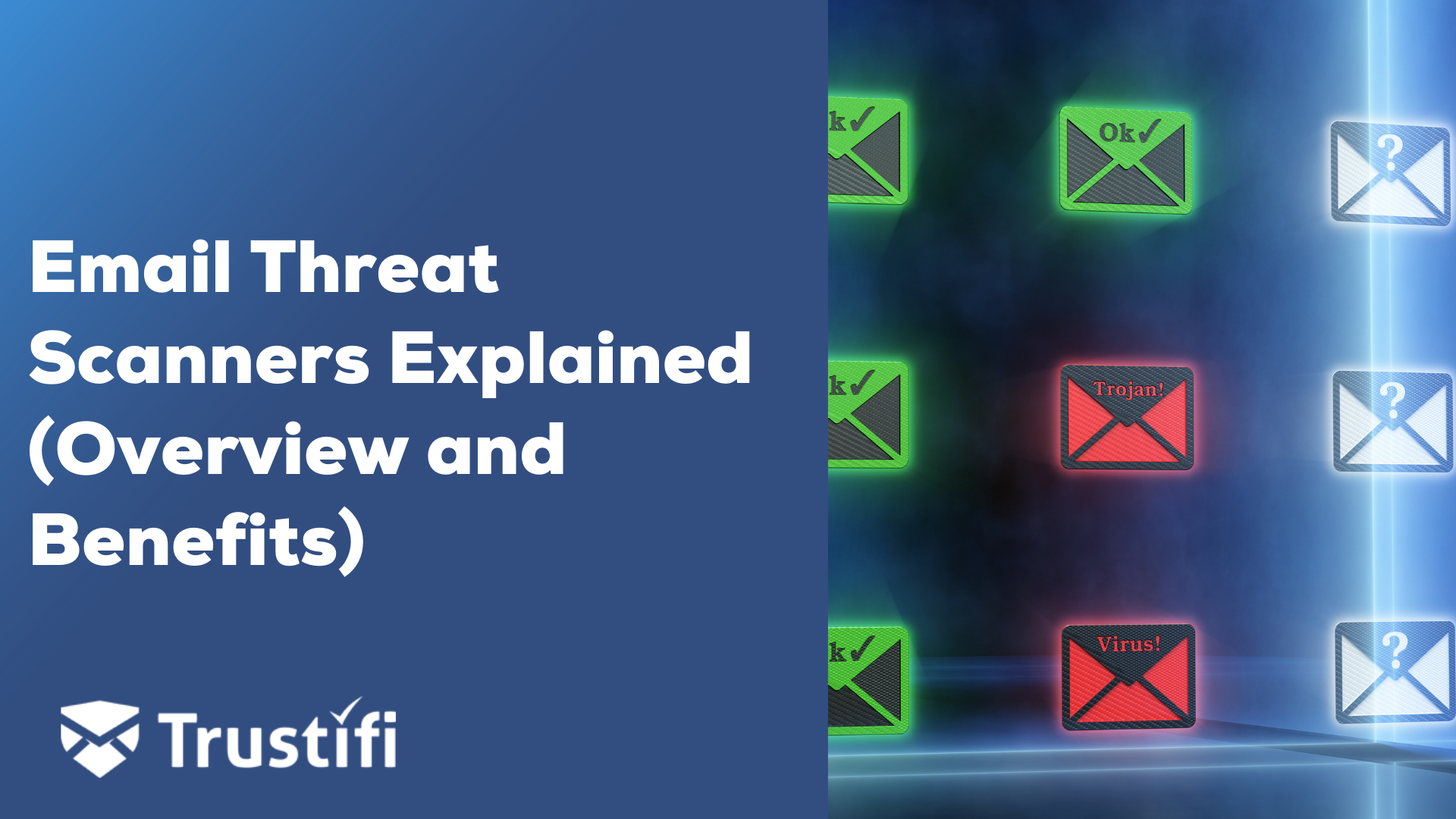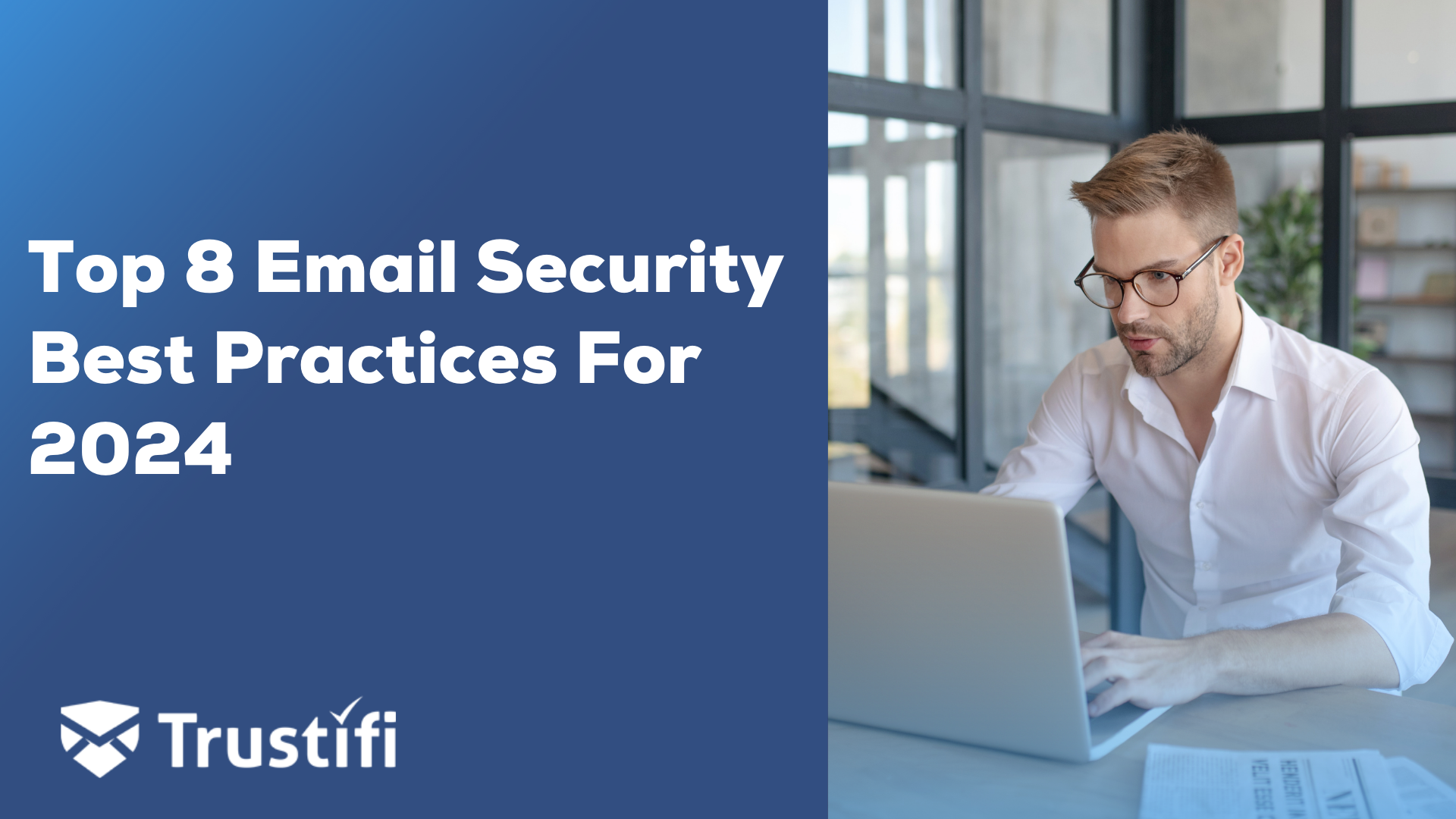Gmail is a widely used email platform with over 1.5 to 1.8 billion users globally, holding 18% of the email client market share. Its popularity was attributed in part to its simplicity and user-friendly interface. The amount of data transmitted through Gmail is substantial, highlighting the importance of ensuring its security.

Organizations using Gmail and Google Workspace as their sending domains for emails have several options regarding email encryption services.
Gmail subscribers should evaluate other email encryption providers like Trustifi, a trusted third-party tool with several encryption capabilities to protect outgoing emails for Gmail and Google Workspaces users.
Introduction
Email is the primary method of communication in the business world, both internally and externally. Effective management of it is essential, as it is both a necessity and a potential risk. Protecting, securing, and ensuring compliance with sensitive information shared via email is crucial.
Ensuring the security of email messages is essential for organizations to comply with various regulations and maintain privacy. The practice of sending corporate emails without encryption is becoming increasingly outdated. Recognizing the significance of data protection, organizations prioritize securing all email communications, regardless of their content.
What are Some of the Security Features and Benefits of Gmail Email Encryption?
Email encryption helps with several business, security, and compliance mandates. Here is a list of five benefits email encryption provides for Gmail clients:
Support for Data Privacy.
Encryption is essential for keeping information private and secure, whether it’s for companies or the government.
Leveraging Cost-effective Integrated Email Encryption.
Organizations wanting to add email encryption should leverage a solution already integrated within their consolidated email security platform. Enabling an integrated capability may include this feature with the current subscription contract.
Meeting Compliance Regulations.
Several compliance guidelines, including HIPAA, CJIS, ITAR, and GDPR, recommend or require encryption for protecting electronic personal information such as ePHI, PII, and NPI. While not all regulations explicitly mandate encryption, companies are advised to implement encryption if a risk assessment determines that sensitive information is at risk.
Organizations Increasing User Efficiency of Email Encryption with Ease-Of-Use Solutions.
Leveraging integrated email encryption helps organizations get more out of their SaaS-based subscription for email security. Most consolidated platforms, including Trustifi, fully integrate email encryption with data loss prevention, tokenization, and account takeover prevention. These additional features integrated with email encryption deliver a more robust ease-of-use solution compared to other platforms using portal-based or standalone products.
Organizations Enabling Email Authentication is a Must for Stopping Spam From Lookalike Domains.
Enabling DMARC, SFP, and DKIM with email encryption helps organizations protect their users. Domain authentication ensures the organization’s sending domain is protected and validates receiving emails coming from a trusted domain.
What Is the Step-by-Step Guide For Encrypting Emails in Gmail?

Email encryption is a security measure that safeguards the privacy and integrity of emails and email attachments. These messages were placed into a secure format that only recipients can access with the decryption key.
“Google’s standard method of Gmail encryption is TLS, also known as Transport Layer Security.” Messages sent through Gmail will become encrypted automatically with TLS.
All users should learn how to use encryption features in Gmail to keep their emails secure. By securing your account settings and using encryption tools, you can protect your information and ensure it stays private and not subject to business email compromise (BEC) or other cyberattacks within the email channel.
Gmail uses two key encryption methods to secure emails in transit:
S/MIME – Green
S/MIME provides secure email communication through end-to-end encryption using user-specific keys and colors, including green for S/MIME. “This ensures that only designated recipients can decrypt and view the email. To use S/MIME in Gmail, a valid S/MIME certificate from a trusted root is required.”
TLS- Gray
“Transport Layer Security (TLS) encrypts email server connections to enhance security and prevent unauthorized email access during transmission. Gmail utilizes TLS for protection, but the effectiveness may vary depending on the recipient’s email provider.”
No Encryption – Red
Red (unencrypted) mail is insecure as the recipient’s domain history becomes analyzed for encryption reliability.
“To verify the encryption level of your recipients’ email providers in Gmail, you can look for a lock icon next to their names. If the icon is present, their service supports S/MIME or TLS encryption. Clicking on the icon will provide more information or options for S/MIME settings.”
Sending an Encrypted Message with Gmail.
Using your browser, connect to your Gmail account.
1. Click compose:
2. “In the bottom right of the window, click Toggle Confidential mode. If you’ve already turned on Confidential mode, go to the bottom of the email, then click Edit.”

3. “Setting an expiration date and passcode impacts the message text and attachments. If ‘No SMS passcode’ is chosen, Gmail app users can open the message directly, while others will receive a passcode via email. If ‘SMS passcode’ is selected, recipients will receive a passcode through text message. Make sure to enter the recipient’s phone number, not yours.”
4. Add the email receivers to the “TO” field. To the right of the name, see a lock with a color representing the level of encryption.
5. Draft the message.
6. Hit send.
What Are The Top Email Encryption Tools for Gmail?
Trustifi.
Trustifi is globally recognized as a leader in advanced artificial intelligence (AI) email security with fully integrated features, including inbound filtering, outbound email encryption with data loss prevention (DLP), and email archiving for e-discovery.
Pro:
Trustifi’s email encryption solution is simple to use and manage from the consolidated console. Users can encrypt and decrypt their messages with a single click. Trustifi supports multi-factor authentication (MFA) as an additional layer of email message protection.
Con:
Trustifi currently is not FedRamp certified.
Preveil.
Using encrypted email with Preveil doesn’t require a new email address. ”This solution works with Gmail, Outlook, Apple Mail, and mobile Mail apps. Authentication is based on possessing a trusted device, not a master password. If you lose all trusted devices, a multi-person recovery system can help you regain access to your account.”
Pro:
Prevail works with existing email accounts and supports encrypted file sharing.
Con: Their solution requires manual installation on non-supported email clients and solutions. Support for Apple Mail is challenging because of Apple’s changes.
Proton Mail.
Proton Mail protects users’ emails through client-side encryption. The company is based in Switzerland and offers several services, including VPN, calendaring, and Proton Drive for cloud storage. Clients access their encrypted emails through a web client.
Pro:
The company delivers end-to-end encryption and offers password protection messages to non-subscribers. Proton mail clients can access other programs as part of their subscription service.
Con:
Before accessing encrypted messages, Java script, session storage, and cookies need to be enabled within the web client.
Virtru.
Virtru offers advanced options for message control beyond basic encryption. Users can customize messages with features such as expiration, watermarking attachments, and setting documents and images for read-only display.
Pro:
The solution offers good integration into Gmail with easy-to-use encryption. Virtru offers attachment protection capabilities for free.
Con:
It only supports Gmail users using Chrome.
Tutanota Premium.
“Tutanota provides secure and encrypted local indexing for searching messages without compromising security. Paid users have unlimited search capabilities, while free users can only search the past 30 days.”
The company offers end-to-end encryption with other Tutanota users. It also has a password-based system for communicating with non-users. Tutanota has an encrypted calendar feature and a Filter system for organizing messages.
Pro:
Tutanota encrypts the entire message, including header information and subject lines. They leave open source to develop their platform. Tutanota also offers clients access to a full-service calendar program.
Con:
The company has hard-set limits on email aliases and search capabilities.
What Compliance Mandates Require Email Encryption?
Here is a sample of compliance and privacy mandates requiring email encryption.
Cybersecurity Maturity Model (CMMC) 2.0.
CMMC 2.0 is a strict security standard required for organizations contracting with the Department of Defense, including defense contractors and research universities participating in government initiatives.
International Traffic in Arms (ITAR).
“ITAR mandates that encryption keys be kept by the data owner in a location inaccessible to their cloud or email provider.”
“The “Carve Out” Rule requires cryptographic protection to apply to data before sending it outside the originator’s security boundary. It must remain encrypted until it reaches the intended recipient’s security boundary.” This security recommendation ensures data becomes encrypted before sharing or emailing.
Criminal Justice Information Services (CJIS).
“CJIS collects criminal justice information from law enforcement agencies and stores it in searchable databases.” Organizations must follow CJIS standards to safeguard this data. Encryption, including email, is mandatory for all data at rest and in transit. CJIS compliance is necessary for any organization accessing this information to protect data.
Gramm-Leach Bliley Act (GLBA).
The GLBA FTC Safeguards Rule requires financial institutions to protect customer data with encryption both in transit and at rest. This rule applies to businesses such as auto dealerships, mortgage lenders, and travel agencies.
Health Insurance Portability and Accountability Act (HIPAA).
HIPAA-compliant email encryption software encrypts text and attachments in emails, protecting ePHl. The software must also have features to prevent unauthorized email alterations or deletions, making apps like WhatsApp non-compliant despite encryption.
What is the Future of Email Encryption for Gmail?
For increased email security and protection of sensitive information, it is recommended to use a third-party app in conjunction with native Gmail encryption. This additional layer of email encryption can help safeguard against hackers’ unauthorized access.
Gmail automatically encrypts emails and works with most recipients without setup. Organizations should consider using Trustifi for one-click encryption and the ability to send encrypted emails to anyone, plugin-free.
FAQ.
Q1: How effective is Gmail protecting emails without Google Workspace?
A1: Gmail does a good job protecting messages with TLS encryption, but TLS is not 100% effective. Google Workspaces offers S/MIME and PGP at an additional cost to increase email protection encryption.
Q2: Why should my organization invest in a third-party email encryption solution?
Q2: Protecting your emails should remain a top priority. Hackers powered by AI continue to steal your data using ransomware. If your organization is mandated to encrypt all messages with AES-256 encryption, leveraging a proven third party like Trustifi ensures you do everything to comply with compliance mandates and protect your data.
Conclusion.
Protect your business data with email encryption, a crucial investment in security. Enabling email encryption within a platform simplifies the deployment of this adaptive control. Integrated email encryption within Gmail and Google Workspaces is even easier with Trustifi.
- Trustifi is a cloud-based email security platform that offers AES-256-bit encryption for secure communication. The platform ensures end-to-end encryption for emails and compliance with data protection regulations.
- Trustifi is a user-friendly software that seamlessly integrates into Gmail. The firm offers features such as blocking users, enabling two-factor authentication, sending disappearing emails, and turning off printing.
Want to increase your Gmail email security to ensure better email encryption protection to help with compliance, cyber insurance, and privacy mandates?
Contact the sales team at Trustifi to schedule a demo of their advanced AI cloud-based email security platform, which is integrated with Gmail encryption.
Request a demo today!


